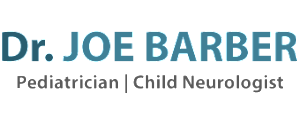T shirts
Often, the difference between success and failure is a willingness to accept and learn from failure.
A few weeks ago a teenager caught my attention with a T shirt that read, “I am not done until I have won.” Stepping to the side, I watched him walk away and wondered if he understood those complex words. Few of us have the opportunity to experience one day, one month or one year without the taste of failure.
Every child fails. Whether it is a dance step, a spelling word or the swing of a bat your child must learn how to recognize, respond and accept failure. Parents are tempted to shield their child from mistakes, loss and lack but this is a false victory. Children raised in a staged world are tempted to forget the power of sadness. Sadness, anxiety, fear and grief although difficult to see in the eyes of your child are emotions that teach resiliency and the authenticity of life. Children, teens and young adults who tip-toe through life are blinded to the limitless power and freedom found within unsuccessful exploration and experimentation. Your support allows your child to become gracious in defeat and willing to try again no matter what the odds.
Every toddler must learn to accept and expect falling before learning to walk. When your child takes that first wobbly step he says to the world: “Here I come!” Falling and failure are your concern not his. As he falls to the ground he looks to you for support. By responding with love and satisfaction rather than fear of failure your child will try again and again. Attuned to your response your son or daughter focuses on doing and not on achieving. Falling teaches your child the world is safe not dangerous and fear of failure is replaced by a willingness to explore.
Children are frequently faulted for not trying hard enough or long enough. They grow up believing success is the only goal in life. Such teaching becomes a learned response and is not a sign of character or fortitude. Rather than teaching success is the Holy Grail to be sought and achieved, we must teach children to believe in themselves and the process of trying. Mastery of this belief depends upon authentic encouragement and approval from those they love. Such support allows your child to pursue ever more challenging explorations inspired by resilience and broadened by independence, judgment and insight.
Never forget life’s greatest learning opportunities come not from what we do right but from what we do wrong. Living is about learning and growing and not about winning. Acceptance of our failures makes winning and losing both gifts.
